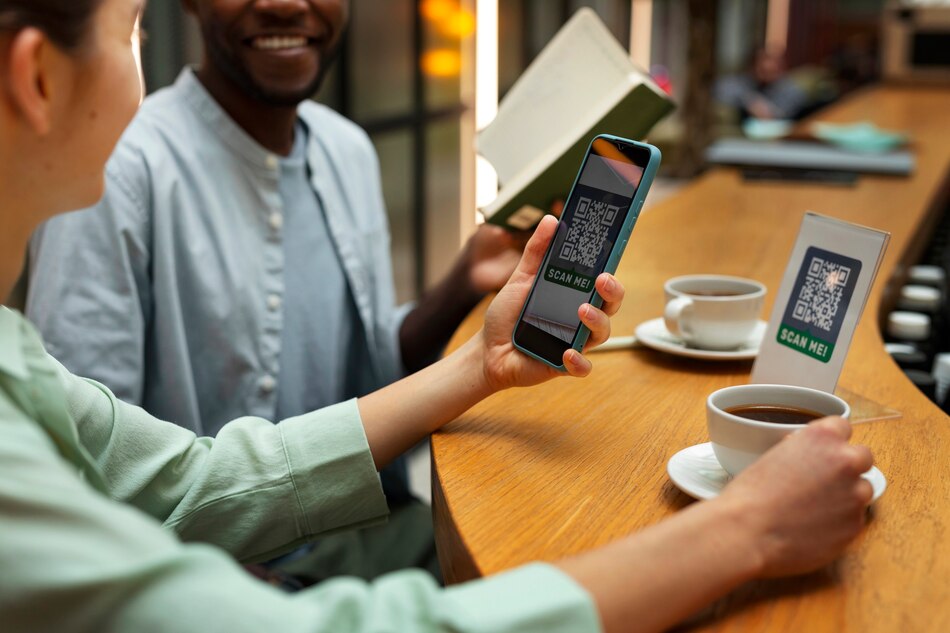Biometric payment systems are changing financial transactions as technology advances. These systems securely conveniently and efficiently verify users’ identities using unique physiological and behavioral traits. This article examines biometric payment systems’ mechanisms, benefits security, real world applications and future potential.
Understanding Biometric Payment Systems
Biometric payment systems provide secure and efficient identity verification by combining cutting edge technology with unique human traits. These systems verify users’ identities using biometric identifiers which are unique physiological or behavioral traits. Biometric data is more complex to forge than passwords or PINs making it a secure payment authentication method.
The Different Modalities Of Biometric Payments
Different biometric payment systems use unique physical or behavioral traits for secure and convenient authentication. Understanding these modalities shows the versatility of biometric payment technology.
1. Fingerprint Recognition
Fingerprint recognition is a popular biometric. It involves photographing and analyzing fingertip unique ridges and valleys. Mobile devices and payment terminals with fingerprint sensors allow users to verify their identity by touching the sensor. Fingerprints are essential to biometric payments due to their convenience and reliability.
2. Face Recognition
Facial recognition is widespread in mobile payments. It examines an individual’s eyes , nose and mouth. Look at a camera to unlock devices or pay. In a contactless world facial recognition provides easy authentication.
3. Iris Scanning
In iris scanning intricate patterns in the colored part of the eye are captured. The accuracy of this modality makes it ideal for high security applications. It is less common in everyday payments but crucial in precise and reliable industries.
4. Speech Recognition
Voice recognition uses a person’s pitch tone and speech patterns. People can verify their identity by saying a phrase or talking naturally. Voice recognition is safe, convenient and doesn’t require device contact.
5. Palm Vein Patterns
Palm vein recognition is rare but secure. It uses near infrared light to capture palm vein patterns beneath the skin. These methods are safe and challenging to counterfeit making them suitable for financial and critical applications.
6. Behavioral Biometrics
Behavioral biometrics include device use traits. Typing mouse and touchscreen gestures are included. Analyzing these behavioral patterns lets systems authenticate users without action. Behavioral biometrics enhance security and user convenience.
The Security And Privacy Aspect
Biometric payment systems provide unprecedented security and convenience but raise essential data and privacy concerns. Understanding how these issues are addressed is crucial to responsible biometrics use in financial transactions.
- Encryption: Biometric payment systems seal biometric data during transmission and storage to prevent breaches.
- Tokenization: Tokens replace sensitive biometric data making it useless to unauthorized users even if accessed.
- Data Protection: GDPR and CCPA regulate biometric data collection use and storage protecting user privacy and data security.
- Biometric Templates: Systems store biometric data templates rather than raw data for added security.
- User Consent: User control and privacy depend on consenting to biometric authentication.
Biometric Payment Systems In Practice
Biometric payment systems have quickly become practical real world applications across industries. Implementing these systems shows their potential to improve security streamline transactions and change financial interactions.
Biometric Payment Systems Are Making Significant Strides In Practical Applications;
- Banking and Finance: Major banks and financial institutions are adding biometric authentication to their mobile apps to secure account access and transactions.
- Retail: Biometric payment systems are replacing cash and cards for in store purchases. Some systems streamline checkout with palm vein or fingerprint scans.
- Healthcare: Biometrics verifies patient identity, reducing fraud and creating accurate medical records. You can also securely access medical data and prescription services.
- Travel: Airports and border control agencies use facial recognition to secure passenger identification throughout check in and immigration efficiently.
- Access Control: Beyond payments biometrics improve security and convenience in corporate educational and government facilities.
The Future Outlook
Biometric payment systems will advance as technology improves and consumers demand secure convenient and seamless financial transactions. Several trends and areas of focus reveal these transformative systems’ future
- Integration with Emerging Technologies: Blockchain and IoT may integrate with biometric payment systems. This integration will improve security and enable new payment scenarios such as automated secure IoT device transactions.
- User Experiences: Faster and more accurate biometric recognition will improve user experiences in future systems. These systems will learn users’ preferences and become more intuitive reducing financial transaction friction.
- Adoption: Hospitality entertainment and smart cities will use biometric payments. Biometric identifiers may become universal for seamless access to various services.
- Social Impacts: Biometric payments will change social norms and behaviors. Businesses and financial services may change as consumers expect secure touchless transactions.
How Secure Are Biometric Payment Systems Compared To Traditional Methods
Biometric payment systems are more secure because biometric identifiers are unique. Biometric data is hard to forge or steal unlike passwords or PINs. However no system is entirely immune to security risks and it is crucial to ensure robust encryption and data protection measures are in place.
Can Biometric Data Be Stolen Or Hacked
Biometric data is secure but vulnerable to breaches. Cyberattacks have caused biometric data breaches. Organizations must execute strict security measures and track data protection laws to reduce risk.
What Happens If My Biometric Data Is Compromised
Compromised biometric data can have serious consequences. You should notify authorities, change compromised biometric credentials and check your financial accounts for suspicious activity. Consider multi factor authentication for added security.
How do biometric payment systems handle issues like false rejections
Environmental factors and changes in user data can cause biometric rejections. Systems use adaptive algorithms to learn and adapt to user patterns reducing false rejections while maintaining security.
Conclusion
In financial transactions biometric payment systems are revolutionary. They will shape payments in the future due to their security, usability and variety. As technology advances and security and privacy concerns are addressed biometric payments may make financial transactions more secure, convenient and accessible worldwide.
